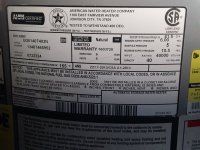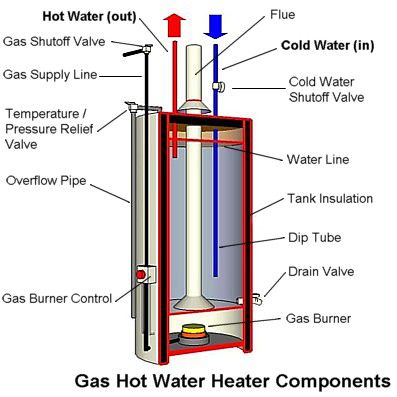Murphysf
Member
Hello
I have a American Hot Water Heater, it is just slightly over 6 years old, just past the warranty.
It is a natural gas, freestanding 40 gallon hotwater heater
Model Number
UG6140T403N
I flushed it about 4 months ago and all kinds of sediment came out. I was surprised as in the SF bay are we have some of the best "softest" water from Hetch Hetchy.
Today I noticed a small puddle of water and water path down my garage floor.
it is leaking from the bottom.
I put my finger in through the sheet metal hole where the drain valve screws in and noticed that the insulation is wet. Perhaps the water is wicking up the insulation or the leak is running down between the tank itself and the outer metal housing.
I got a towel and dried everything up however minutes latter very small seepage. I noticed that the water temp of the water that is seeping is at around room temp or even colder.
I always assumed that the bottoms of the tanks corroded and that is where the leaks originate.
Perhaps it is leaking at the top inlet side? and running down the side of the tank?
Ideas?
Thanks!
I have a American Hot Water Heater, it is just slightly over 6 years old, just past the warranty.
It is a natural gas, freestanding 40 gallon hotwater heater
Model Number
UG6140T403N
I flushed it about 4 months ago and all kinds of sediment came out. I was surprised as in the SF bay are we have some of the best "softest" water from Hetch Hetchy.
Today I noticed a small puddle of water and water path down my garage floor.
it is leaking from the bottom.
I put my finger in through the sheet metal hole where the drain valve screws in and noticed that the insulation is wet. Perhaps the water is wicking up the insulation or the leak is running down between the tank itself and the outer metal housing.
I got a towel and dried everything up however minutes latter very small seepage. I noticed that the water temp of the water that is seeping is at around room temp or even colder.
I always assumed that the bottoms of the tanks corroded and that is where the leaks originate.
Perhaps it is leaking at the top inlet side? and running down the side of the tank?
Ideas?
Thanks!


